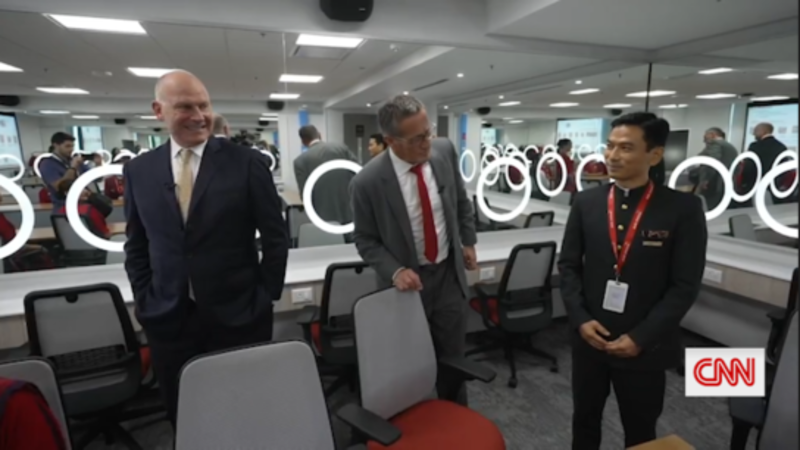Air India CEO Campbell Wilson recently gave CNN’s Richard Quest an exclusive tour of the airline’s cutting-edge training facilities. The visit, which took place in Mumbai, highlighted Air India’s commitment to enhancing its operational standards and training capabilities as it seeks to regain a competitive edge in the global aviation market.
The unveiling of these facilities comes at a crucial time for Air India, as the airline is undergoing a significant transformation under new ownership by Tata Group. The tour provided a glimpse into the sophisticated training programs designed to equip Air India’s staff with the skills necessary to meet the evolving demands of the aviation industry.
State-of-the-Art Facilities and Training Programs
During the tour, Wilson showcased the airline’s advanced simulators and training modules that are integral to pilot and crew training. These facilities are part of a broader initiative to modernize Air India’s operational framework and improve service quality.
“Our goal is to ensure that our staff is not only well-trained but also adaptable to the latest technological advancements in aviation,” Wilson explained. “This investment in training is a testament to our commitment to safety and customer satisfaction.”
According to industry experts, investing in training facilities is crucial for airlines aiming to maintain high safety standards and operational efficiency.
Historical Context and Future Prospects
Air India’s focus on training is not new. Historically, the airline has been known for its rigorous training programs. However, the recent upgrades signify a renewed emphasis on innovation and excellence. This development follows Tata Group’s acquisition of Air India, marking a new era for the airline that was once a symbol of national pride.
In the past, Air India’s training programs have been instrumental in producing skilled aviation professionals. The current enhancements are expected to build on this legacy, ensuring that Air India remains competitive in a rapidly changing industry.
Expert Opinions and Industry Comparisons
Industry analysts believe that Air India’s investment in training facilities is a strategic move that aligns with global trends. Many leading airlines are prioritizing training to cope with the challenges posed by technological advancements and increasing passenger expectations.
“Air India’s approach is in line with what we are seeing globally,” said aviation expert John Smith. “Airlines are recognizing that well-trained staff are crucial to maintaining a competitive edge.”
Implications for the Aviation Industry
The move represents a significant step forward for Air India, potentially setting a benchmark for other airlines in the region. As Air India continues to upgrade its infrastructure and services, the airline is poised to play a pivotal role in the Indian aviation sector’s growth.
Meanwhile, the broader implications for the industry could be substantial. As more airlines follow suit, the emphasis on training could lead to improved safety records and enhanced passenger experiences worldwide.
Looking ahead, Air India’s focus on training and development is expected to contribute positively to its brand reputation and operational success. As the airline continues to evolve, its commitment to excellence in training will likely remain a cornerstone of its strategy.
In conclusion, Campbell Wilson’s tour with Richard Quest not only showcased Air India’s impressive facilities but also highlighted the airline’s ambitious plans for the future. As the aviation industry continues to navigate post-pandemic challenges, Air India’s proactive approach to training could serve as a model for others to follow.
About The Author
 Wilmington Teen Arrested for Gun Possession Sparks Community Concerns
Wilmington Teen Arrested for Gun Possession Sparks Community Concerns Justice Sought by Veterans in Texas Killing of Afghan Ally
Justice Sought by Veterans in Texas Killing of Afghan Ally Microschools Expand Beyond Their Initial Scope Amid Growing Demand
Microschools Expand Beyond Their Initial Scope Amid Growing Demand Waffle House Removes Egg Surcharge Amid Falling Prices
Waffle House Removes Egg Surcharge Amid Falling Prices Marines Test ‘Narco Sub’ for Stealth Logistics in Indo-Pacific
Marines Test ‘Narco Sub’ for Stealth Logistics in Indo-Pacific